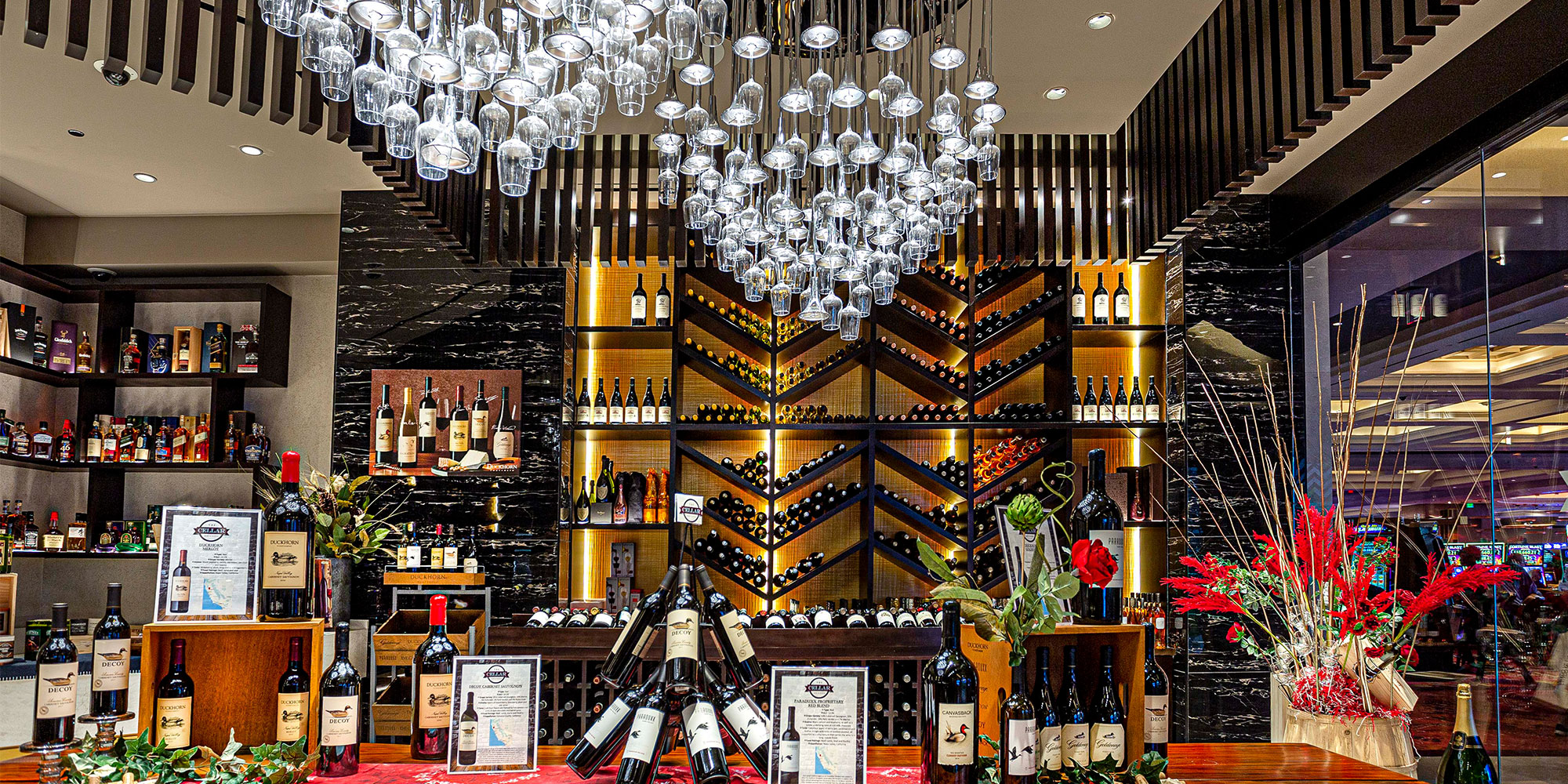Editor’s note: This story was reported and written before in early March, before the pandemic. The Seminole Hard Rock is currently operating with a limited capacity, and some restaurants are not available. The facts and figures described below are reflective of the property operating at full capacity.
On a recent Friday afternoon, we went into the Seminole Hard Rock Hotel & Casino Tampa with a plan. We were going to detail a typical week in the life of executive chef Albert Tash, who oversees the design and operation of the Hard Rock’s 12 dining concepts, as well as menu creation and team communication.
Tash quickly disabused us of the idea that there was such a thing as a “typical” week — or even a typical day — in the life of an executive chef charged with serving 10,000 diners every 24 hours.
“It changes constantly week over week,” Tash says.
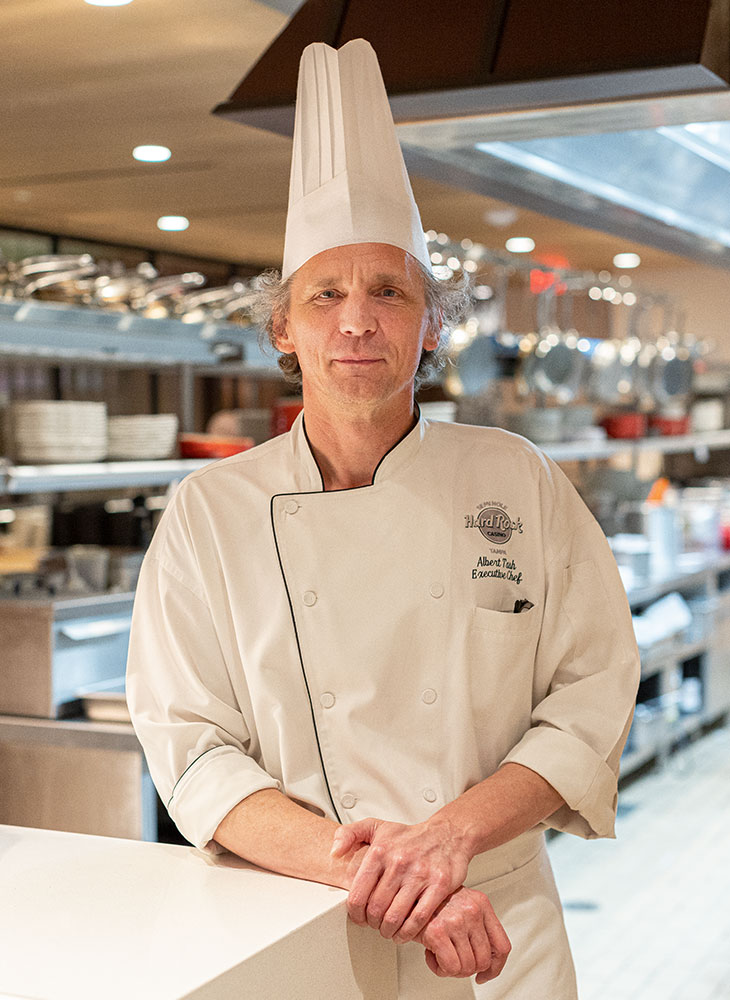
He typically arrives on property around 8 a.m. when just one restaurant, the 24-hour Rise Kitchen & Deli, is open for business. Administrative tasks like meeting with chefs, reviewing menus and specials, analyzing food costs, and communicating with support departments like human resources and purchasing are slotted in wherever they fit. That’s usually on weekdays before 11:30 a.m., when Fresh Harvest Buffet and Hard Rock Café open and the rest of the property’s restaurants are in full prep mode.
“That’s when things really start ramping up,” Tash says.
Well, at least when things are going according to schedule. Tash uses forecasting spreadsheets to predict the number of diners per hour at each restaurant, each day, based on historic numbers and extenuating circumstances — say, a special giveaway at the casino that entices more people to visit the property, and thus the restaurants.
He’s usually pretty close. But there are many days, like the day we visited, where unexpected employee sick days or a surprise influx of guests scramble Tash’s best-laid plans. “Today Rise Kitchen & Deli, for whatever reason, did three times the volume we expected for breakfast, so it’s all hands on deck, pulling chefs [from other restaurants], needing everybody to get through it, and then they go back to their normal duties,” Tash says. “And that happens constantly.”
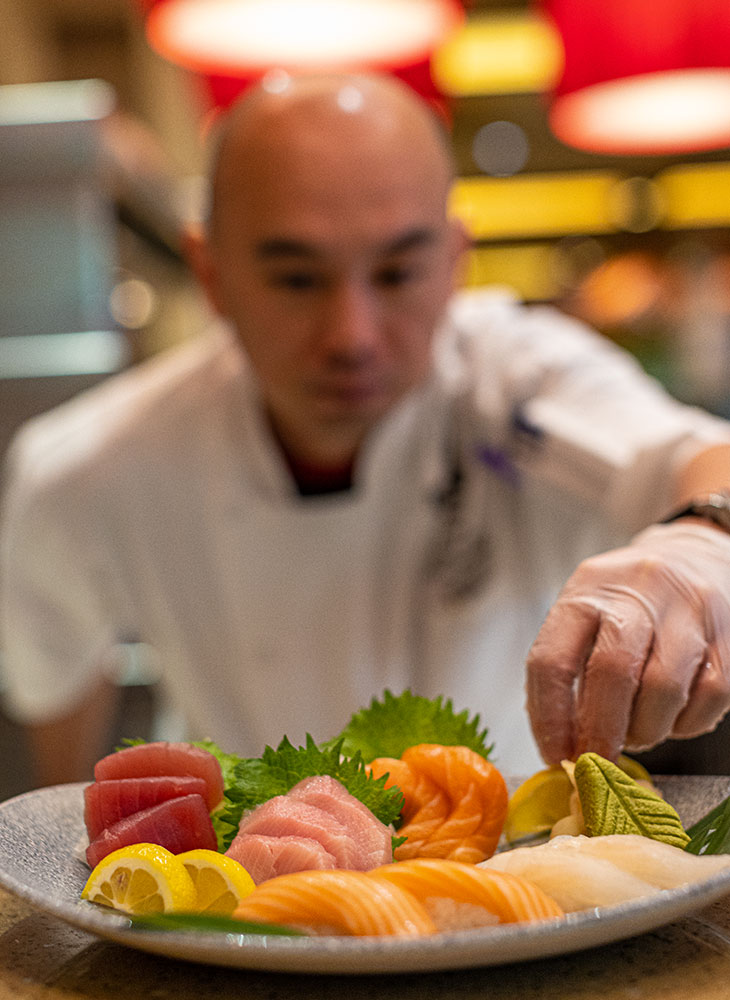
Tash and the 43 chefs that report to him cross-train as many of their 370 cooks as possible so they can pull in help for any one of their 16 kitchens when it’s needed.
So what goes into making an operation of this sheer size tick? On the following pages, we asked Tash to break down some of the most interesting, surprising and eye-popping facts and stats behind the logistics of his team’s average month.
From painstakingly hand-painted chocolates to top-shelf Japanese beef, read on for a peek behind the glitz and glamour of the Seminole Hard Rock Tampa’s award-winning restaurants.
Hard Rock Tampa – By The Numbers
55,000–60,000
The approximate number of meals served across the Seminole Hard Rock Tampa property each week. While the Hard Rock team doesn’t have an exact mechanism for tracking how many diners are coming to the property just to eat versus coming to game or stay in the hotel, Tash says almost 50% of restaurant tabs are paid for in cash instead of with points earned in the casino — suggesting non-gamers make up a significant portion of people dining at the property’s restaurants. “It’s something we’ve been working on for the past two years, to establish ourselves as a dining destination,” Tash says.
40,000
The number of pizza slices served per month in the busiest restaurant on Hard Rock Tampa property: The employee dining room. The Seminole Tribe of Florida offers each Hard Rock employee a complimentary meal every shift, plus unlimited beverages, snacks and salads. About 70,000 meals are served off the employee dining room’s hot bar every month.
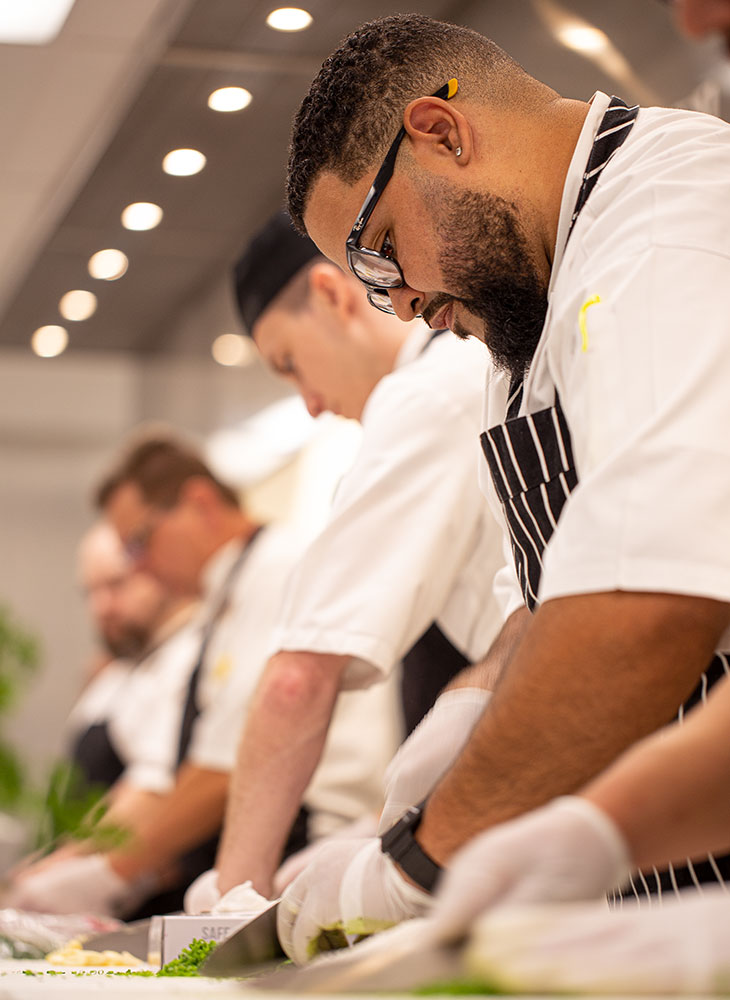
$500,000
The average amount of food purchased wholesale by the Seminole Hard Rock Tampa each week. That works out to somewhere in the area of 40 to 50 pallets of food brought in by the property’s receiving department each day.
15,000
Eggs served per month at Rise Kitchen & Deli. Serving around 2,400 meals a day, Rise is the busiest customer-facing restaurant at the Hard Rock, followed by the Fresh Harvest buffet (2,300) and the Hard Rock Café (2,000).
23
The approximate number of times per day the tables are turned over at Jubao Palace Noodle Bar, the Hard Rock’s smallest restaurant. With just 44 seats, it feeds more diners per seat than any other eatery on property. On busy days, Tash says, Jubao will serve 1,300 meals. “I’ve never heard that before in all my career — any venue turning the tables that many times,” he adds.
1,000
Number of ducks served per month at Jubao
6,500
Number of burgers served each month at the Hard Rock Café, plus an additional 6,000 sliders. Despite the amount of cooking required across the property, Tash and his team do as much of it from scratch as possible. The Hard Rock’s burger patties are ground and formed in-house, while pasta at the Italian restaurant Cipresso is made from scratch each day.
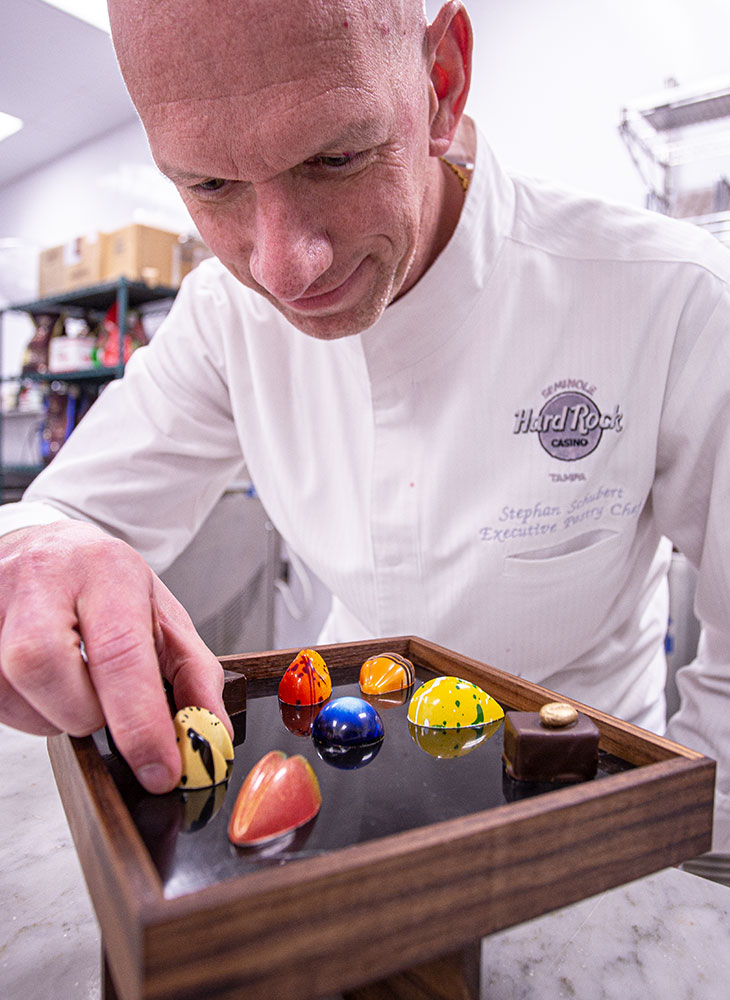
4,000
Number of chocolate truffles made each month by executive pastry chef Stephan Schubert in 12 rotating flavors. When he was growing up in Germany, Schubert’s grandmother would make chocolate fudge each year for Christmas. She never gave away the recipe. After her passing, Schubert was cleaning out her attic when he stumbled upon a box. He looked inside, and there was the secret fudge recipe. Today, he uses that same recipe for all the chocolates he produces at the Hard Rock.
300
Gallons of gelato produced by Schubert and his team each month, making it the most popular dessert on property (followed by cheesecake and chocolate truffles). Schubert’s desserts are available at restaurants across the property.
$60,000
Worth of coffee purchased wholesale each month, along with 1,000 gallons of coffee cream and 2,000 gallons of milk
3,000
Pints of strawberries purchased each month
14,000
Ears of corn purchased each month
70,000
Oysters shucked at the Fresh Harvest buffet raw bar every month. The buffet features seven stations, each with a made-to-order component, from Mongolian bowls to crepes.
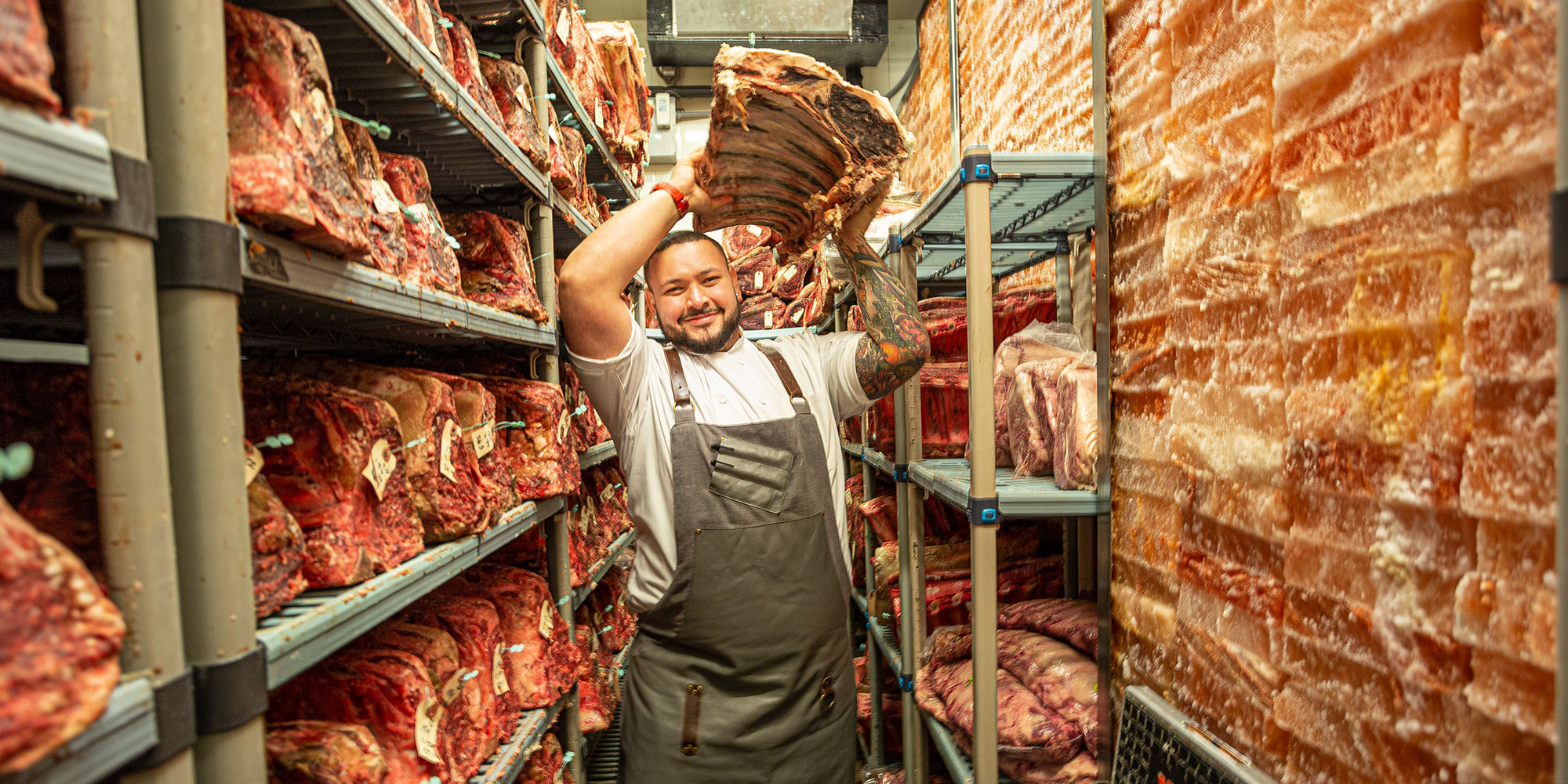
$100,000
Value of the prime beef dry aging in Council Oak Steaks & Seafood’s butcher shop at any given time. Led by executive butcher Walter Apfelbaum, the culinary team ages all their beef in-house for around 28 days, or longer by special request.
600
Pounds of A5 Japanese wagyu served at Council Oak each month, ringing up at more than half a million dollars (wholesale) each year.
“There was a time when casinos were like slot-houses. The food they served was dubious, and it was always really cheap,” Tash says. “We don’t do that here. I think any of our venues could easily exist anywhere in Tampa and be very successful as a free-standing restaurant.”
“They are concepts that stand on their own merits. They just happen to be here in the casino.”


